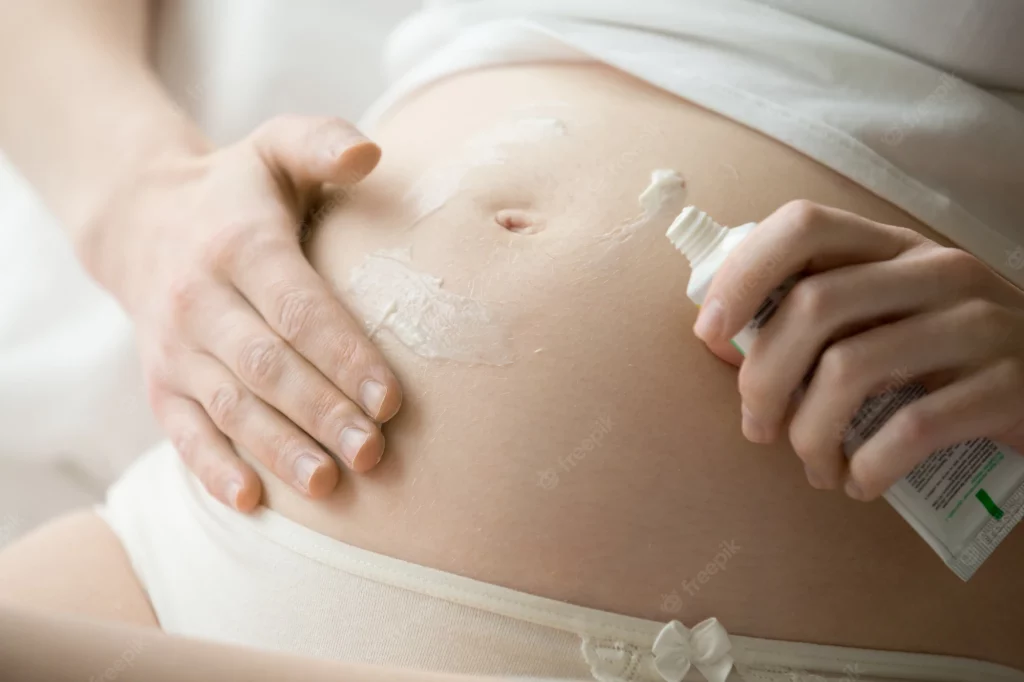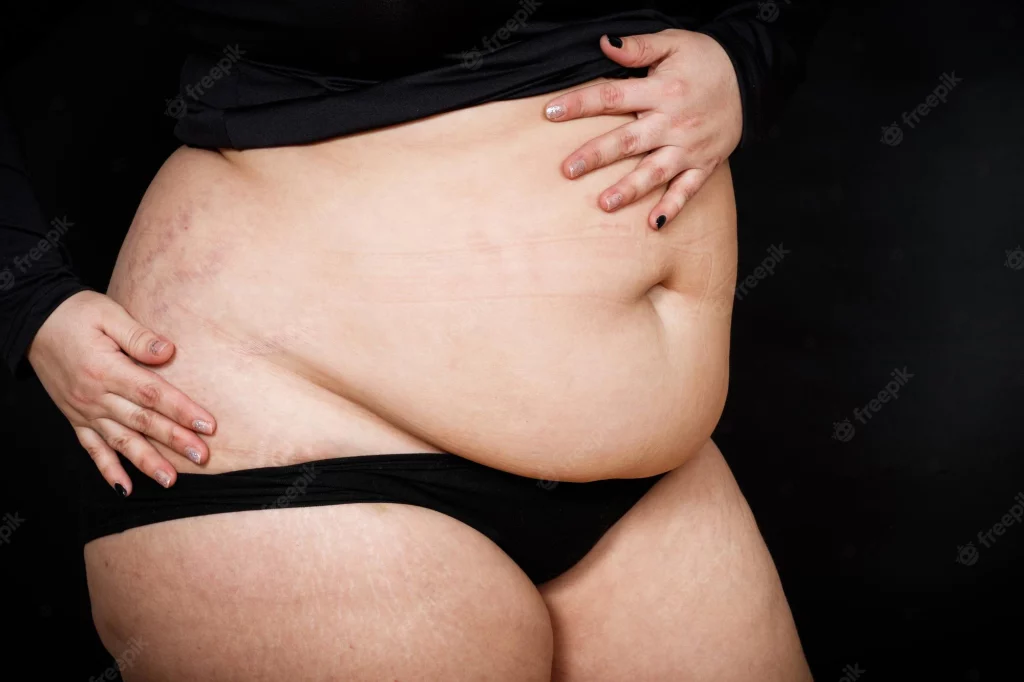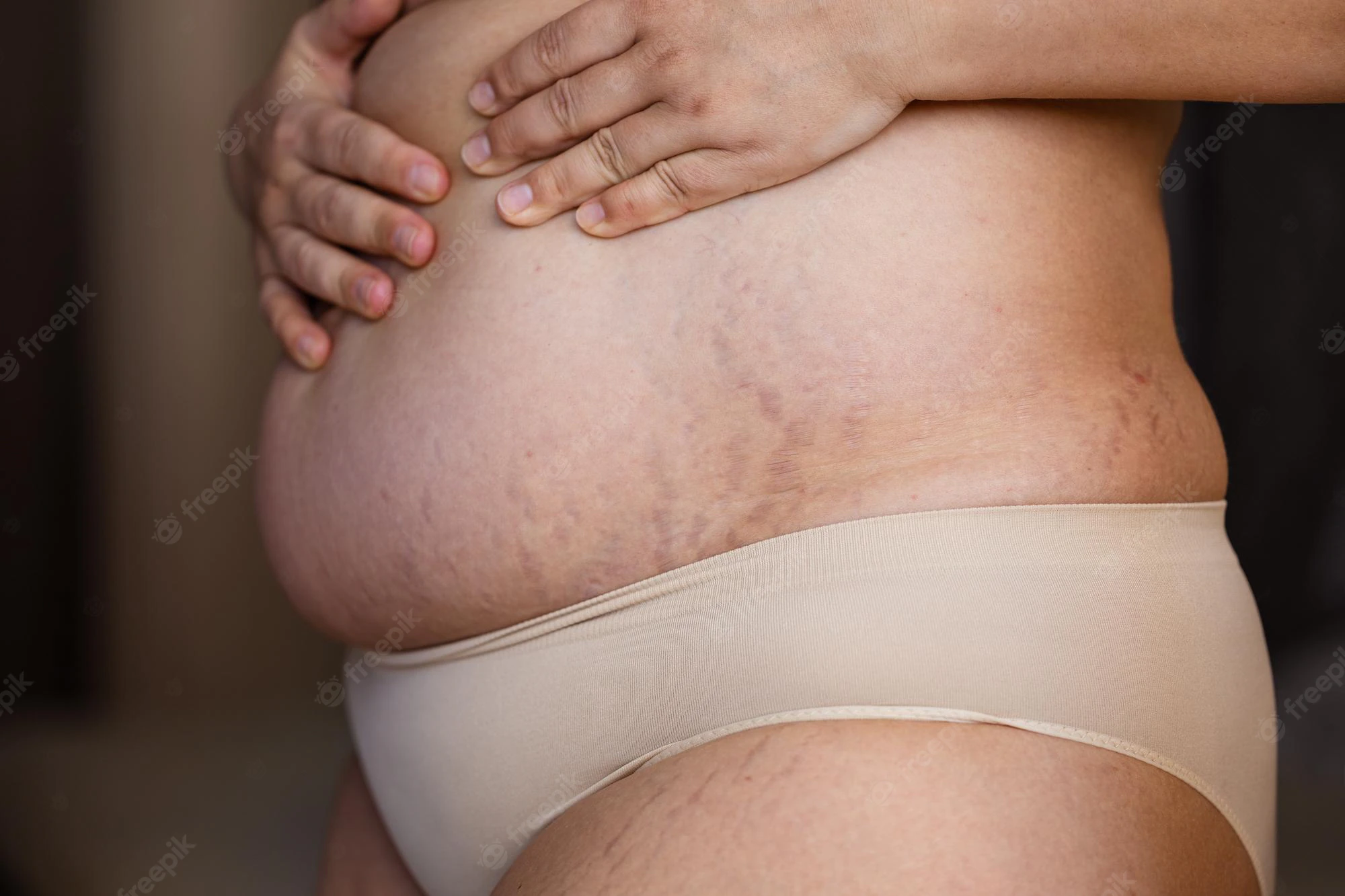
Stretch marks are a common side-effect of pregnancy. They form when the skin stretches beyond its normal elasticity, and can appear on any part of the body. While they’re not always easy to deal with, there are a few things you can do to help them fade away sooner. Read on for tips on how to reduce stretch marks growth spurt and make them less visible.
Contents
- 1 What are stretch marks?
- 2 The Causes of Stretch Marks
- 3 How to Get Rid of Stretch Marks
- 4 What are stretch marks?
- 5 How do they form?
- 6 What are the causes of stretch marks?
- 7 Treatment for Stretch Marks
- 8 Prevention of Stretch Marks
- 9 What are stretch marks?
- 10 How do Stretch Marks Form?
- 11 How to prevent Stretch Marks from Developing?
- 12 How to Treat Stretch Marks?
- 13 What are stretch marks?
- 14 Causes of Stretch Marks
- 15 How to get rid of stretch marks
- 16 Home remedies for Stretch Marks
- 17 What are stretch marks?
- 18 How do stretch marks form?
- 19 How to get rid of stretch marks?
- 20 Stretch mark prevention tips
- 21 Conclusion
What are stretch marks?
Stretch marks are scars that form when the skin pulls and tugs on itself excessively. They can be unilateral (one side only) or bilateral (two sides).
Stretch marks are most common during puberty, pregnancy, and childbirth. They may also form after weight loss or increase in muscle mass.
The size, shape, color, and number of stretch marks vary from person to person. Stretch marks can be raised, flat, or scaly.
There is no known cure for stretch marks, but they can be treated with creams and lotions.
The Causes of Stretch Marks
Stretch marks are scars that result from the stretching of the skin. They can occur anywhere on the body, but they are most commonly seen on the breasts, thighs, and abdomen. They can also appear on the buttocks. The cause of stretch marks is usually physical activity, such as childbirth or weightlifting, although they can also be caused by trauma, such as a fall. Stretch marks may fade over time, but they may also remain visible after pregnancy. There is no known cure for stretch marks, but there are treatments that can help manage them.
How to Get Rid of Stretch Marks
Stretch marks are a common form of scarring and may remain even after the original skin has healed. While there is no guaranteed way to remove stretch marks, there are a few things you can do to improve your odds.
One of the best ways to reduce the appearance of stretch marks is to keep them hydrated. Drinking plenty of water can help dilate the skin, which in turn will help reduce the appearance of scars. Additionally, using moisturizers that contain hyaluronic acid can also help improve the look of stretch marks. If you are struggling to find a moisturizer that doesn’t contain harsh chemicals, consider using unscented lotions or creams.
Another important step to reducing the appearance of stretch marks is to avoid sunlight exposure. The sun’s ultraviolet rays can damage the skin and increase the likelihood of developing stretch marks. If you must expose your skin to sunlight, apply sunscreen every day before going outside and make sure to reapply it throughout the day.
Finally, don’t stress about stretch marks if they’re already present. Although they may not be aesthetically pleasing, they are generally harmless and will eventually disappear on their own.
What are stretch marks?
Stretch marks are scars that form on the skin when it is stretched or pulled too tightly. They can happen anywhere on the body, but are most commonly seen on the breasts, thighs, and abdomen.
The cause of stretch marks is not completely known, but they may be caused by genetics, weight gain or loss, pregnancy, childbirth, or intense exercise.
Stretch marks typically fade over time, but some people may experience residual stretch marks after a strenuous workout or during weight fluctuations during their menstrual cycle.
If you are concerned about your stretch marks or want to learn more about them, speak with your doctor or nutritionist.
How do they form?
Stretch marks form due to the stretching and pulling of the skin. The elasticity of the skin is decreased after childbirth, which can lead to the formation of stretch marks. They may also form from sudden weight gain or loss, excessive exercise, or pregnancy.
What are the causes of stretch marks?
Stretch marks are scars that form on the skin as a result of tension or compression. They can be caused by many different things, including pregnancy, weight gain or loss, childbirth, and obesity.
There isn’t really a surefire way to prevent stretch marks, but you can take some steps to help minimize their appearance. Here are some of the most common causes of stretch marks and how you can avoid them:
Pregnancy: Stretch marks are common during pregnancy due to the increased stretching and tension on the skin. You can help prevent them by maintaining a healthy weight during your pregnancy, exercising regularly, and avoiding excessive stretching or pressure on your skin.
Weight Gain or Loss: If you gain or lose significant amounts of weight suddenly, your skin may be more susceptible to stretching and scarring. Try to gradually increase your calorie intake and exercise over a longer period of time to avoid sudden changes in your weight that could cause stretch marks.
Birth: During labor and delivery, the body is often subjected to extreme stress and tension. This can cause stretch marks on the skin near the vagina or anus. To minimize their appearance, try to stay calm during labor and delivery, avoid any unnecessary pain medications, and make sure
Treatment for Stretch Marks
There is no one-size-fits-all solution when it comes to treating stretch marks, as the treatment plan will vary depending on the severity of the stretch marks, the person’s age and skin type, and other factors. However, some general tips for treating stretch marks include:
1. Apply topical treatments regularly. Some topical treatments that can be used to treat stretch marks include hydroquinone (HQ), tretinoin (TRA), adapalene (ADP), and vitamin A supplements. It is important to remember to apply these treatments daily, as they may take a few weeks to start working.
2. Consider laser therapy. Laser therapy has been shown to be an effective treatment for stretch marks because it stimulates new collagen production in the skin. The downside is that laser therapy is typically more expensive than other treatments and may require several sessions over a period of weeks or months.
3. Use topical ointments or creams with sunscreens. This combination can help protect the skin from further damage while providing some relief from the appearance of stretch marks.
4. Consider surgery if medications or other treatments do not work well or if there are severe stretch mark scars
Prevention of Stretch Marks
Stretch marks are a common side effect of pregnancy. The skin stretches and tears, but does not return to its original size. This produces a line on the skin that may fade with time. There are several ways to prevent stretch marks from forming:
-Avoid being too heavy during pregnancy. This will cause your body to expand more than usual, and could lead to Stretch Marks.
-Stay hydrated. Dehydration can cause your skin to break down and produce unwanted Stretch Marks. Drink plenty of fluids throughout the day and make sure to stay well-hydrated during labor and delivery as well.
-Use sunscreen and moisturizers regularly. Sunscreen helps protect your skin from the sun’s harmful rays and moisturizers help keep your skin hydrated, which can prevent Stretch Marks from forming.
-Avoid overstretching your skin. If you feel like you’re stretching your skin too much, stop immediately! Overstretched skin is more likely to form Stretch Marks.
What are stretch marks?
Stretch marks are a type of scarring that can occur as the result of skin elasticity and/or incontinence. They are typically seen on the abdomen, thighs, buttocks, and other areas where skin is stretched excessively. Stretch marks are generally red and raised, but can vary in color, shape, size, and intensity.
There is no one cause for stretch marks, but they can often be caused by prolonged or excessive stretching of the skin (including during pregnancy), rapid weight gain or loss, surgery or physical trauma.
How do Stretch Marks Form?
Stretch marks are a result of the elasticity and resilience of the skin. When the skin is stretched or pulled, it can leave behind lines or streaks. Stretch marks occur most commonly during puberty, pregnancy, and after childbirth. They can also form from extreme weight loss or muscle growth, as well as intense physical activity.
How to prevent Stretch Marks from Developing?
If you’re pregnant, there’s a good chance you’ll get stretch marks. Stretch marks form when the skin stretches beyond its normal limit. They can appear on any part of the body, but they’re especially common on the breasts, stomach, thighs, and buttocks.
There’s no one surefire way to prevent stretch marks from forming, but there are a few things you can do to help. First, make sure you’re getting enough exercise. Exercise helps keep the skin elastic and prevents it from becoming stretched too much. Second, avoid wearing tight clothing or bathing suits that pull at your skin. Both of these activities can cause your skin to stretch disproportionately. Finally, keep a close eye on your diet. If you’re eating a lot of high-fat foods and not enough protein or fiber, your skin will be more likely to stretch out in response to weight gain or pregnancy hormones.
If you do start getting stretch marks, don’t worry – they’ll eventually fade away on their own.
How to Treat Stretch Marks?
There is no one-size-fits-all answer to treating stretch marks, as the best approach will vary depending on the individual’s skin type and how much stretch marks are present. However, some general tips that may help include applying moisturizer or applying a stretch mark cream on a regular basis, using a sun protection factor of at least 30, and avoiding overexertion or excessive heat.
What are stretch marks?
Stretch marks are a skin lesion that occurs as a result of rapid stretching and thinning of the skin. They are generally harmless but may occasionally be associated with scarring.Most stretch marks form during childbirth, weight loss, or puberty.Many factors can contribute to the development of stretch marks, including genetics, hydration, and sun exposure.The most effective way to reduce the likelihood of developing stretch marks is to maintain a healthy weight, eat a balanced diet, and avoid excessive sun exposure.
Causes of Stretch Marks
Stretch marks are a common side-effect of pregnancy, childbirth, and weight gain. They may form from the stretching and tearing of the skin below the surface layer. There are many possible causes of stretch marks, including genetics, hormones, and age.
Stretch marks can vary in color, size, shape, and severity. Some people may experience few or no stretch marks at all; others may develop them in significant numbers.
There is not one cure for stretch marks, but there are a number of treatments that can help reduce their appearance or improve their healing process. Some common treatments include topical creams, laser therapy, and surgery.
If you are concerned about your stretch marks or want to learn more about the causes and treatments available to you, please visit our blog section!
How to get rid of stretch marks
stretch marks can be caused by a variety of factors, including weight loss or gain, pregnancy, and childbirth. While there is no surefire way to completely eliminate stretch marks, there are a few things you can do to help reduce their appearance. Here are four tips for reducing the appearance of stretch marks:
1. Increase your intake of protein. A high-protein diet has been shown to reduce the appearance of stretch marks by promoting growth and healing in the skin. Aim to get at least 20 grams of protein daily.
2. Exfoliate regularly. Stretching and pulling the skin can cause scars and wrinkles, which can make stretch marks look worse. Add a gentle exfoliant to your skincare routine to help smooth out these lines.
3. Use lightening products if you have darker stretch marks. Darker stretch marks are more difficult to lighten and may require a higher concentration of lightening products than lighter markings to achieve results.
4. Seek treatment if your stretch marks persist despite these tips. If you experience significant swelling or redness around the lesions, seek medical attention as these may be signs of an infection or other health issue that should be addressed promptly.

Home remedies for Stretch Marks
There are many home remedies for stretch marks, but the one that has worked for most people is to use a topical cream. Apply the cream to the marks every day, and then wait an hour before showering or bathing. This allows the cream to work its magic and reduce the visibility of the marks.
What are stretch marks?
Stretch marks are a type of scarring that can occur as a result of stretching or tearing the skin. They are often noted on the breasts, abdomen, and thighs after childbirth, during weightlifting and abdominal exercises, or during periods of rapid weight gain or loss.
Stretch marks are most common on the torso and limbs above the knee, where the skin is elasticity. The markings may be red, purple, yellow, or brown in color and may fade with time.
There is no known cause for stretch marks and they cannot be removed surgically. However, they can be treated with various topical creams and ointments.
How do stretch marks form?
Stretch marks are a cosmetic blemish that can form on the skin during rapid growth spurts in adolescence and early adulthood. During growth spurts, the skin stretches and tears. These tears mix with blood and oil, creating stretch marks. Stretch marks can appear anywhere on the body, but are most commonly seen on the stomach, breasts, hips, and thighs.
There is no known cure for stretch marks, but there are treatments available that can help improve their appearance. Some of these treatments include laser therapy, cryotherapy (freezing), and topical creams.
If you are concerned about your stretch marks, talk to your doctor about what treatments might be best for you.
How to get rid of stretch marks?
Stretch marks can be a frustrating issue for many people. Fortunately, there are a few things that you can do to help reduce the appearance of stretch marks. Here are a few tips:
– Try using a skin care product that contains lightening ingredients. This will help to reduce the appearance of stretch marks and lighten your skin overall.
– Avoid wearing clothes that are too tight or restrictive. This can cause your skin to stretch and create stretch marks.
– Exercize regularly. This will help to improve the elasticity of your skin and reduce the likelihood of developing stretch marks in the first place.
Stretch mark prevention tips
If you’re thinking about getting stretch marks, there’s some important things you need to know. Stretch marks are caused by the stretching of the skin, and they can happen during your growth spurt. Here are some tips to help prevent them from happening:
1. Eat a balanced diet. A good diet will help you maintain your muscle mass, which can reduce the amount of stretch marks that appear on your skin. Protein is especially important because it helps keep your skin elastic and helps build up collagen, both key ingredients in preventing stretch marks.
2. Increase your protein intake. One of the best ways to prevent stretch marks is to increase your protein intake. This will help build up collagen in the skin and keep it elastic. Make sure to include sources of protein such as meat, fish, poultry, and eggs in your diet.
3. Drink plenty of water. Another key factor in preventing stretch marks is staying hydrated. Drink plenty of water throughout the day to keep your skin hydrated and avoid dryness that can lead to stretching or cracking of the skin
Conclusion
Stretch marks are a common occurrence during growth spurts, but there are ways to prevent them from appearing. By following some simple tips and taking the necessary precautions, you can help minimize the risk of stretch marks forming on your skin. As always, consult your doctor if you’re concerned about any potential stretch mark risks. Thank you for reading!

